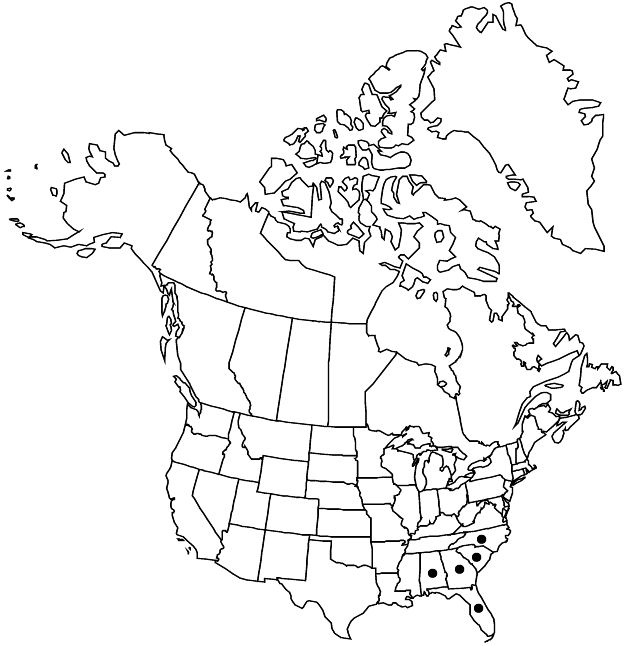Crataegus lancei
J. Bot. Res. Inst. Texas 2: 1143, fig. 30 [top]. 2008.
Shrubs or trees, 50–80 dm, branches ± weeping. Stems: twigs: new growth densely pubescent to tomentose, 1-year old purple-brown to blackish, older dark gray; thorns on twigs absent or numerous, ± straight, 1-year old purple-brown to blackish, slender, 3–4 cm. Leaves: petiole length 15–25% blade, pubescent, glandular; blade usually narrowly obovate to obtrullate, sometimes oblanceolate, 2–3 cm, thin to subcoriaceous, slightly floppy, base ± contracted, lobes 0 or 1–2(–3) per side distally, short, lobe apex subacute, margins glandular, weakly crenate-serrate, veins 1–3 per side (terminating beyond widest part of leaf), apex acute to obtuse, surfaces canescent to woolly only near midvein young, becoming glabrate, abaxial main vein axils with tufts of hair. Inflorescences 3–7-flowered; branches pubescent to densely pubescent; bracteoles deciduous, linear, margins short-stipitate-glandular, adaxially short-pubescent. Flowers 10–12 mm diam.; hypanthium densely pubescent; sepals triangular, 3–4 mm, margins glandular-serrate, abaxially pubescent; anthers cream; styles 3 or 4. Pomes often copper to deep red, suborbicular, 10 mm diam., pubescent; sepals patent-reflexed; pyrenes 3 or 4.
Phenology: Flowering Apr–Sep; fruiting Aug–Sep.
Habitat: Open scrub, woodlands
Elevation: 0–800 m
Distribution

Ala., Fla., Ga., N.C., S.C.
Discussion
Crataegus lancei is fairly common from Alabama to the Carolinas and northern Florida. In Buncombe County, North Carolina, C. lancei is found near the highest elevations for members of ser. Lacrimatae. The species is one of the narrow-leaved members of the thick-twigged group. Its crenate-margined short-shoot leaves vary from more or less elliptic-oblong, lobes absent, to narrowly obovate (rarely narrowly elliptic-rhombic) with a single well-defined, short, subterminal, toothlike lobe on each side. In this it differs from C. senta, in which short-shoot leaves are oblong-spatulate to cuneate with several short but acute, subterminal lobes. Extension-shoot leaves also differ markedly (see C. senta). When the narrower type of short-shoot leaves, which are broadest near the middle, are plentiful, C. lancei is one of the most distinctive species in the series. Other striking features include inflorescences more floriferous than usual for the series and often dark orange to deep red, cherrylike fruits.
Selected References
None.